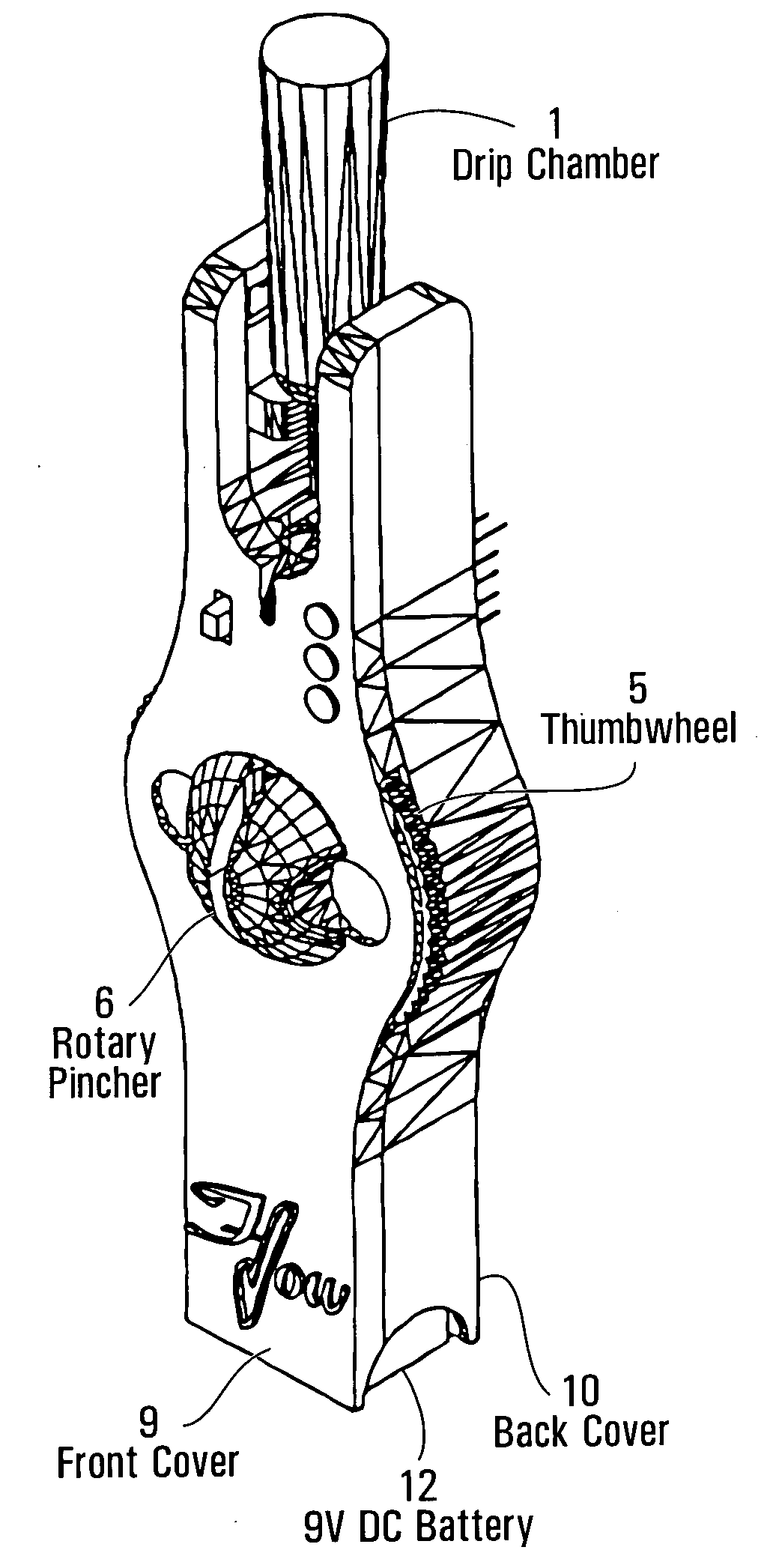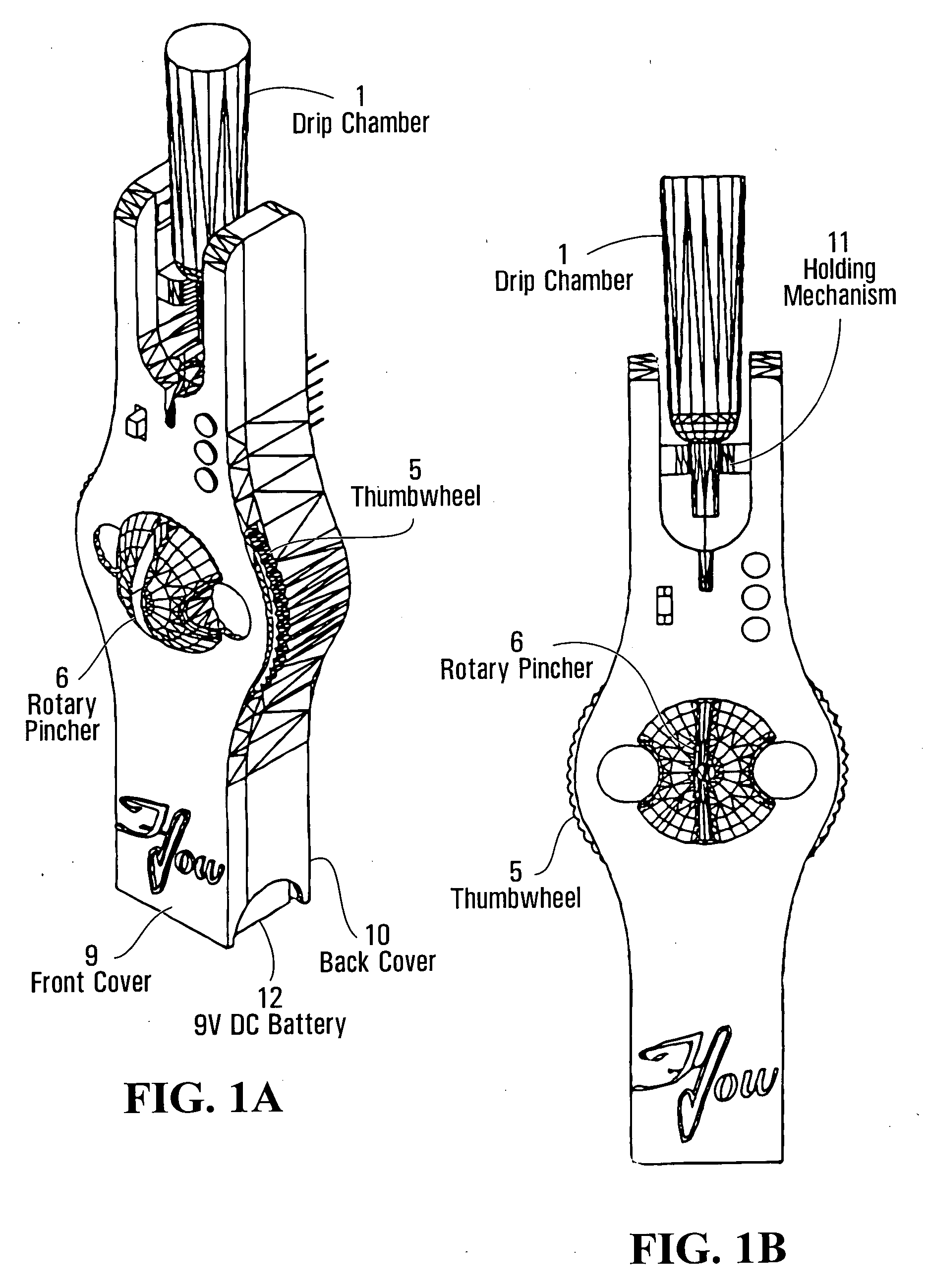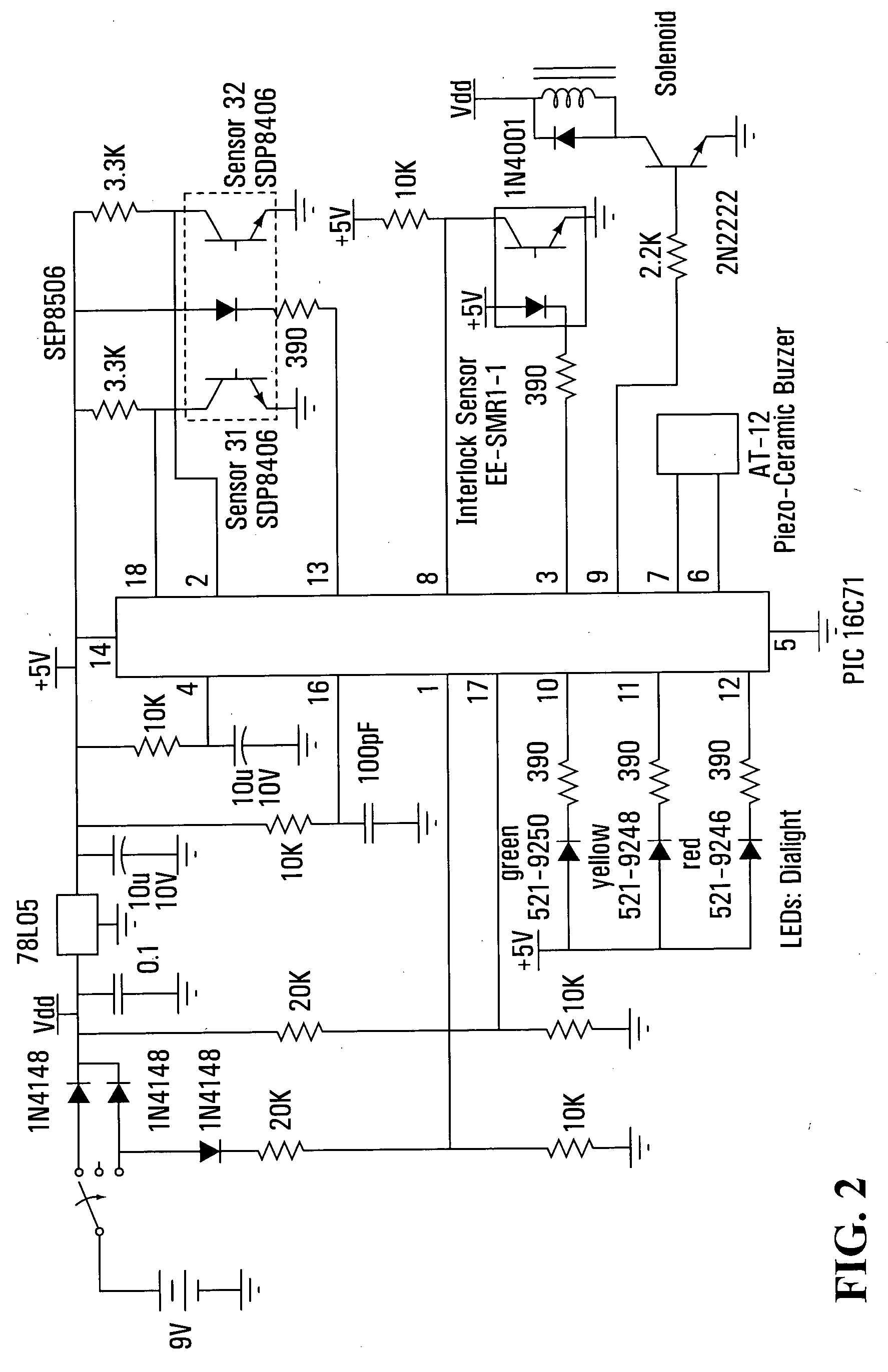Fluid monitoring device
a monitoring device and fluid technology, applied in the direction of flow monitors, traffic control systems, weighing devices, etc., can solve the problems of obstructing further fluid delivery, waking up patients from anesthesia during surgery, obstructing fluid delivery, etc., to reduce manufacturing costs, reduce surface area, and increase the effect of holding capacity
- Summary
- Abstract
- Description
- Claims
- Application Information
AI Technical Summary
Benefits of technology
Problems solved by technology
Method used
Image
Examples
Embodiment Construction
[0054] The following is a description of a preferred embodiment of the invention, embodied in an intravenous monitor. The device includes a drip chamber 1. The chamber is a conventional drip chamber found on most I.V. sets. An infrared emitter 2 and pick-up (sensor) is included as well. There is also a circuit board 3. An electromechanical device 4, preferably a solenoid, is included. Other components such as a thermo strip could be used instead of the solenoid depending on the reaction time required. A thumbwheel 5 is used to manually rotate the rotary pincher 6 to the open position. This motion loads a torsion spring (not shown) that supplies the force to the pincher. The rotary pincher is mounted on the thumbwheel and “pinches” the tube (stopping the flow) as it rotates 90 degrees counterclockwise. This occurs when the signal is received from the circuit board. A lever 7 is attached to the electromechanical device (EMD) and is used to increase the force of the EMD. This allows th...
PUM
 Login to View More
Login to View More Abstract
Description
Claims
Application Information
 Login to View More
Login to View More - R&D
- Intellectual Property
- Life Sciences
- Materials
- Tech Scout
- Unparalleled Data Quality
- Higher Quality Content
- 60% Fewer Hallucinations
Browse by: Latest US Patents, China's latest patents, Technical Efficacy Thesaurus, Application Domain, Technology Topic, Popular Technical Reports.
© 2025 PatSnap. All rights reserved.Legal|Privacy policy|Modern Slavery Act Transparency Statement|Sitemap|About US| Contact US: help@patsnap.com



